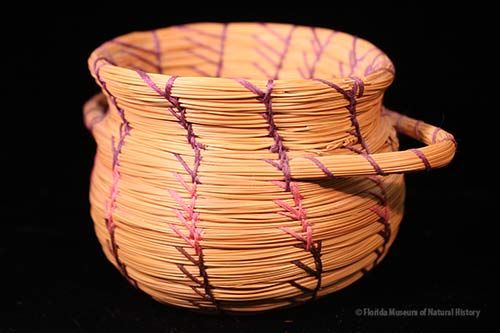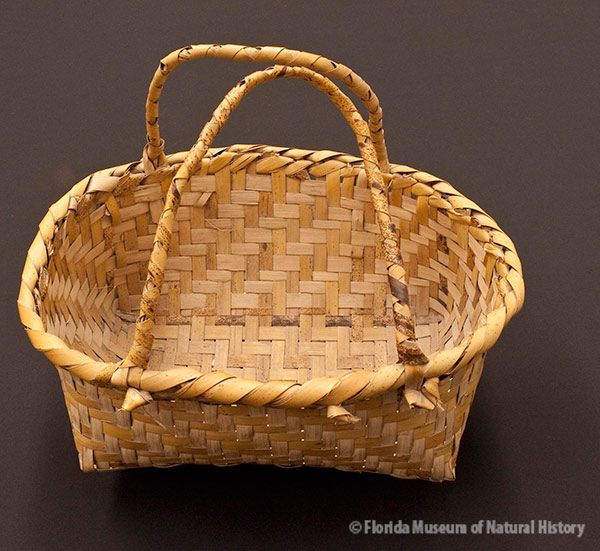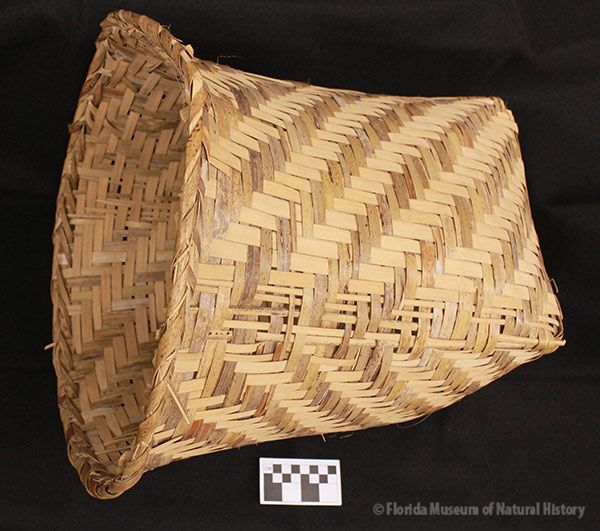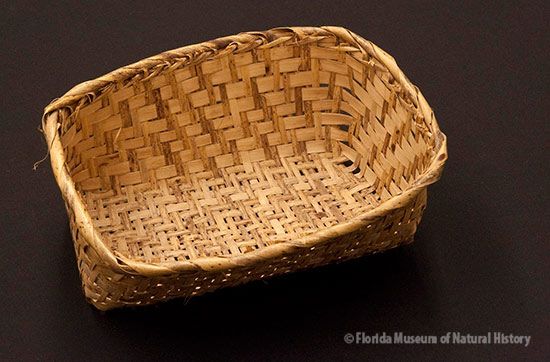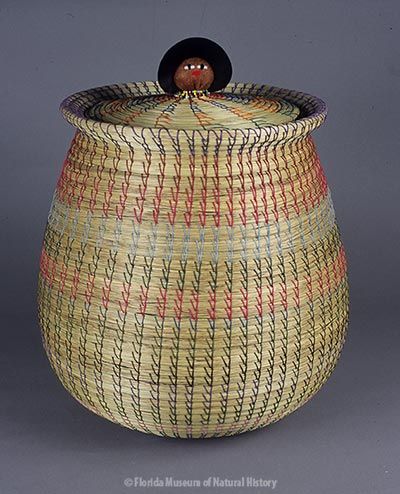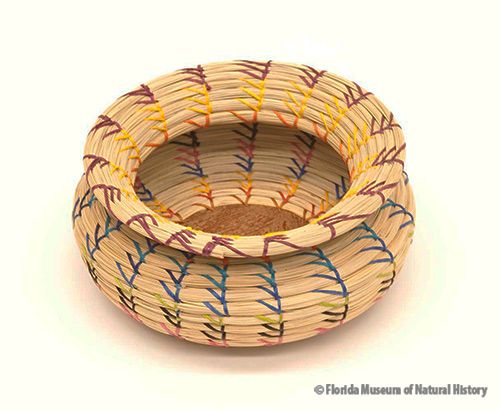The Florida Museum’s Seminole and Miccosukee basket collection consists of 38 baskets made from a variety of materials. Materials include cane, palmetto, palm leaves, and sweetgrass. The collection covers 150 years of history, from the 1830s to the 1990s, and includes pack, envelope, berry, sieve, and coiled sweetgrass baskets.
Seminole and Miccosukee Basket Makers
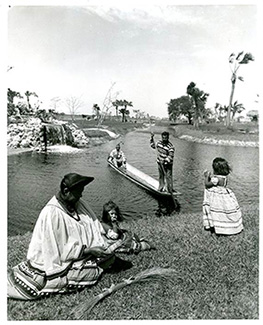
Traditional Seminole and Miccosukee baskets are made of cane and palmetto and were used to collect and process food. The earliest examples are cane. Palmetto replaced cane after the ancestors of today’s Seminole and Miccosukee tribes migrated south from Georgia and Alabama into Florida in the late 18th century.
Today most Seminole and Miccosukee baskets are made from sweetgrass. Sweetgrass baskets became popular in the 20th century as tourists began visiting South Florida for its warm climate and beaches. These baskets proved to be a favored and inexpensive souvenir item, and they remain popular today.
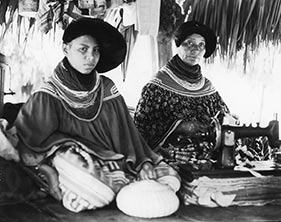
Why are these baskets important?
Basket making is one of the oldest of crafts, and basket makers continue to combine older techniques in innovative ways. The Seminole and Miccosukee basket collection at the Florida Museum captures a 150-year history of basket making tradition and transformation.
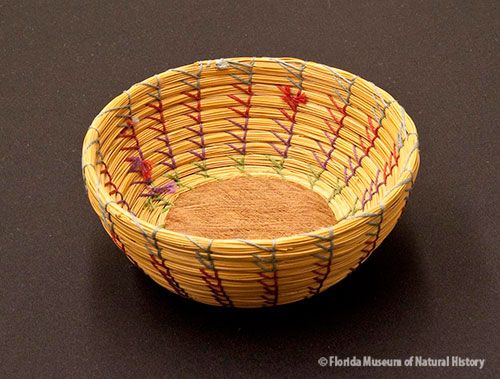
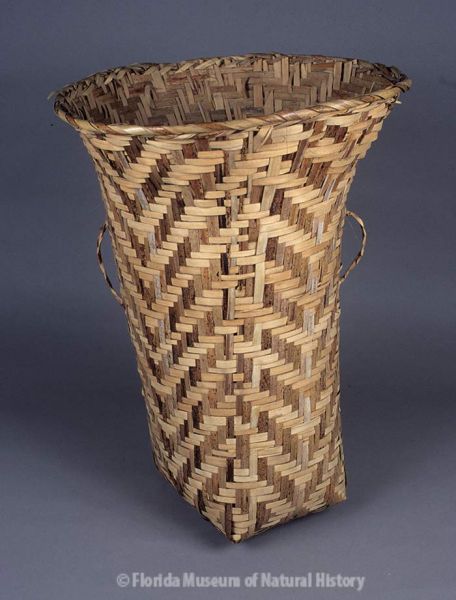

Cultural Revitalization
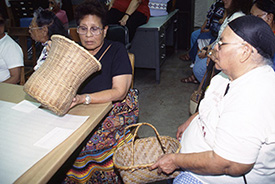
Our people have been perfecting their skill in basketry for centuries, but unfortunately, during the past few generations, palmetto baskets are quickly becoming a lost art. By the time that I came along, my great grandmother, Juanita Osceola, and her sisters, were no longer making them.
—Pedro Zepeda, Panther Clan
Seminole tribal members have sought to revitalize the tradition of making palmetto baskets for the last few decades. Arts and crafts programs sponsored by cultural departments teach both young and old how to select the proper stems for harvest, as well as the process of stripping, drying, and fashioning the stems into a plaited basket.
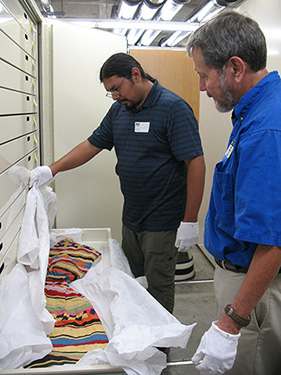
The traditional way of learning basketry is by observation. This includes watching a basket maker at work or examining a basket that has already been made. Seminole tribal members have visited the Florida Museum to examine objects for insight into past techniques, including baskets. These visits aid the museum as well because knowledge offered by tribal members helps better our understanding of the collection.
Environmental Concerns
Keeping traditions alive can be difficult if they require materials that are vulnerable to depletion or are under threat. The materials used to make Seminole and Miccosukee baskets are natural and so resource scarcity is a concern.
